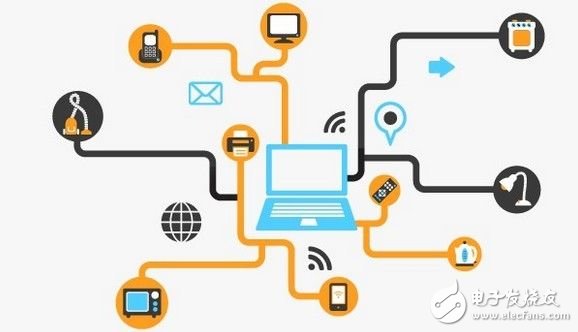With the growing popularity of wearable devices such as smart cities, smart homes, smart watches and smart glasses, and various smart cloud technology applications in finance and healthcare, the Internet of Things will show faster growth in the coming years. At the same time, due to security attacks caused by information leakage, it brings certain risks and losses to enterprises or individuals. How to upgrade the information security of the Internet of Things has become the focus of attention in the industry. The chip company has also launched an upgraded version of its chip hardware technology for this area, hoping to achieve a more secure and ubiquitous Internet of Things (IoT) technology.
Internet of Things booming and security synchronization upgrade
According to Cisco's latest Visual Network Index report, there will be more than 10 billion mobile devices/connections by 2017, including more than 1.7 million machine-to-machine (M2M) connections. The ever-increasing number of network connections has greatly increased the likelihood of network security vulnerabilities.
According to researchers, as many as 78% of respondents are worried about the damage caused by lost or stolen mobile phones. However, although many companies have begun to take stricter measures on the security of mobile terminals, 42% of malware or viruses can escape full scanning, and currently only 39% of mobile terminal management system (MDM) adoption rate.
Therefore, MarTIn Nuss, Vice President and Technology Director of Technology and Strategy at Vitesse, emphasized the future of IoT for security, as well as its various industries including single-point and process manufacturing, energy and smart grid distribution, and physical security and surveillance. The application in it is extremely important.
As the number of Internet connections continues to grow strongly, 2014 will undoubtedly present additional challenges to IoT networks that introduce or expand wireless infrastructure. MarTIn Nuss noted that the number of cells required in mobile networks is growing exponentially due to new mobile terminals, bandwidth-intensive applications, and small cellular base stations. Network devices are no longer only deployed in places where physical security is already available, such as macro base stations or host terminals; these new access points can be used anywhere, such as small base stations used in wireless networks, which are often installed outdoors for easy access. The place. Because it is directly targeted at users, it is particularly vulnerable to hackers. The Internet of Things industry needs the high degree of encryption of these 'last mile' links; plus the authentication, authorization and billing of users and network devices, and high encryption is enough to ensure the security of important data.
On the other hand, as wearable devices emerge, more and more devices are joining the network, ensuring that the need to share data becomes more important—especially for medical and financial information. Rich Collins, product marketing manager for Synopsys Systems, believes that many wearable devices are used today for medical diagnosis. Although it is necessary for patients to share personal medical information with doctors, this information involves personal privacy and should not be shared publicly. .
According to a survey conducted by the market research institute InfoneTIcs Research, the global cloud security market will grow by 45% in 2013 and reach a market size of US$9.2 billion in 2017. As the cloud security market continues to grow, it will bring opportunities for application and market expansion for related industries; at the same time, encryption technology will become a new growth point.
As the cloud security market continues to grow, encryption technology will become a new growth point (Source: InfoneTIcs Research)
At present, the Internet of Things security technology has been valued by the industry, and a set of reliable security systems has been initially established. But in the emerging smart home and car networking, traditional security technologies are facing new challenges. Christophe Tremlet, Maxim Integrated Security Applications Marketing Manager, believes that smart homes are a simple example: you can monitor your home's temperature, humidity, motion sensors and further control heaters or appliances for smarter energy management through your smartphone. However, users certainly do not want others to do these things without permission. In addition, a basic requirement of the Internet of Things is that each object has a unique identifier.
He also pointed out that modern encryption technology is based on open algorithms, and its strength has been tested by experts, so that validated algorithms can be used directly. The road to designing a highly secure component is long and tortuous. If the deployment is not correct, encryption becomes useless; just because multiple systems that claim to be secure using the RSA algorithm can become fragmented due to imperfect or inappropriate deployment. In order to confirm that the encryption technology used in the IC is trustworthy, the components must be tested against the standard to ensure that the appropriate encryption or digital signature is applied to the customer's final product. In addition to protecting customers against deployment vulnerabilities, the strength of encryption algorithms can be enhanced. If you only implement encryption in software, you may also face multiple attack pipelines such as physical intrusion, bypass analysis, and fault injection. The purpose is to obtain the key.

Brushless BLDC Worm Gear Motors
Worm Gear Motor,Planetary Gear Motor,Brushless Gear Motor,Brushless Bldc Worm Gear Motors
Jinan Keya Electron Science And Technology Co., Ltd. , https://www.keyaservo.com